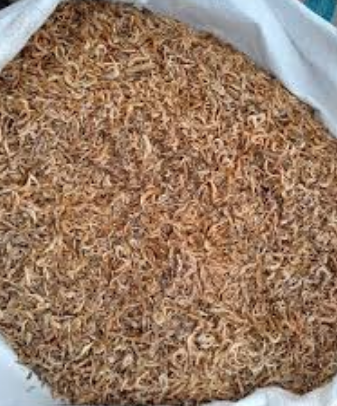
As Lake Victoria grapples with a deepening ecological crisis, a small freshwater shrimp locally known as ochong’a is emerging as a symbol of resilience and hope for hard-hit fishing communities.
With fish stocks declining due to pollution, climate change and rampant use of illegal fishing equipment, this once ignored species is thriving where others have declined.
Experts and community leaders are now turning their attention to ochong’a as a potential catalyst for economic recovery.
Though not consumed by humans, the shrimp is being harvested in large volumes for use in animal and fish feed, sparking interest in its potential to fuel a homegrown feed industry along the lake’s edge.
Speaking during the 22nd Lake Victoria Day at Asat Beach in Kisumu county, Uhai Lake Forum chairman Prof Raphael Kapiyo urged communities and partners to embrace ochong'a.
Kapiyo said Lake Victoria is a shadow of what it once was, with Indigenous fish species disappearing and pollution is choking regeneration.
“But ochong’a may be the key to rebuilding, small as it is, it’s a foundation we can work from,” he said.
Despite its abundance, Kapiyo said local communities are missing out on its full economic value.
He said many fisher folk, struggling to make ends meet, sell sacks of the product to middlemen for as little as Sh1,200 who in turn resell them across the Tanzanian border at significantly higher prices.
“They walk away withhuge profits while our people go home empty-handed,” Kapiyo said.
Once reliant on bountiful catches of Tilapia and the Nile perch, many lakeside communities now depend almost entirely on ochong’a, but are yet to make good returns.
“The lake can no longer provide clean water or edible fish. Ochong’a is all that remains and even that is not eaten. But our people need to see its potential,” Kapiyo said.
Morelly Adeli, a researcher at the Kenya Industrial Research and Development Institute, described Ochong’a as a symptom of ecological distress and a pathway to economic revival.
“Its proliferation is a sign of declining water quality. But it also presents a chance to develop new livelihoods. By empowering local communities to process it into feed, we can create jobs and ease the pressure on the lake.”
Kirdi, she said, is ready to support these communities by setting up small-scale processing units at Asat Beach and other strategic locations.
The goal, Adeli said, is to train locals in value addition, enabling them to transform the shrimp into high-protein feed for poultry and fish farming.
The researcher said it is heartbreaking to visit the beach and find no fish to fry, adding that all is not lost.
“The lake still holds promise. With the right investment and support, Ochong’a could help rewrite the story of this region.”








